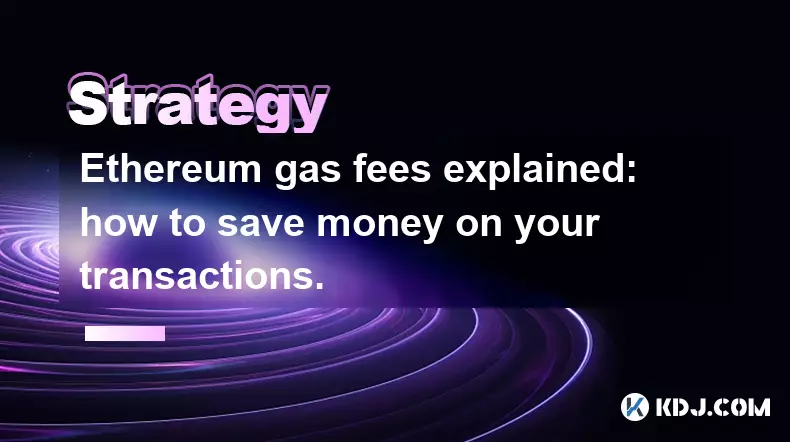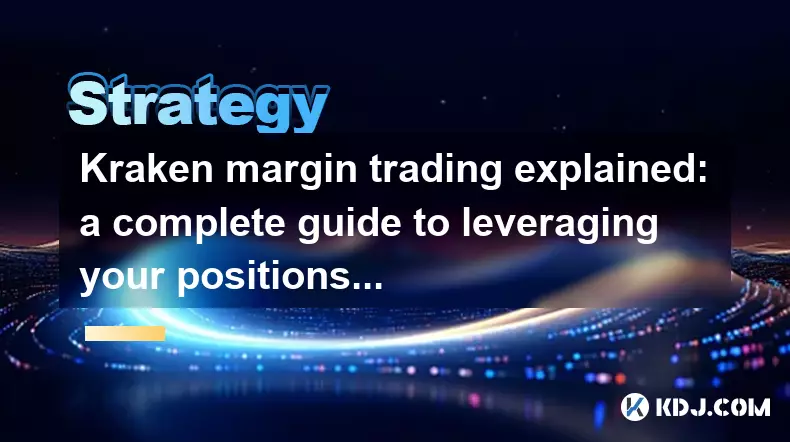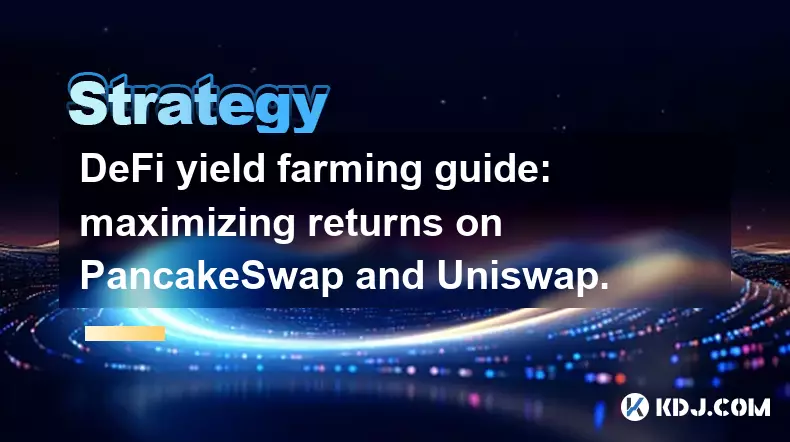-
 bitcoin
bitcoin $101752.865364 USD
-1.09% -
 ethereum
ethereum $3382.985899 USD
-1.38% -
 tether
tether $0.999658 USD
0.04% -
 xrp
xrp $2.272505 USD
-1.51% -
 bnb
bnb $989.089004 USD
0.14% -
 solana
solana $156.962612 USD
-3.08% -
 usd-coin
usd-coin $0.999776 USD
0.01% -
 tron
tron $0.290786 USD
-0.69% -
 dogecoin
dogecoin $0.174594 USD
-2.86% -
 cardano
cardano $0.560085 USD
-3.55% -
 hyperliquid
hyperliquid $40.023704 USD
-5.75% -
 chainlink
chainlink $15.324649 USD
-2.78% -
 bitcoin-cash
bitcoin-cash $493.576540 USD
-3.52% -
 zcash
zcash $571.320038 USD
-12.05% -
 stellar
stellar $0.280066 USD
-4.26%
Handling fees for short-term currency speculation techniques
Short-term currency speculation incurs transaction fees, including trading fees, maker and taker fees, network fees, and withdrawal fees, which can significantly impact overall profitability.
Jan 10, 2025 at 01:32 pm

Handling Fees for Short-Term Currency Speculation Techniques: A Comprehensive Guide
Key Points:
- Understanding the various types of fees associated with short-term currency speculation.
- Optimizing trading strategies to minimize transaction costs.
- Selecting exchanges and platforms that offer competitive fee structures.
- Employing cost-cutting techniques to enhance profitability.
- Evaluating the impact of fees on overall returns.
Understanding Fee Structures in Short-Term Currency Speculation
Short-term currency speculation, also known as day trading or scalping, involves frequent buying and selling of cryptocurrencies within a short timeframe. This strategy typically generates multiple small profits that accumulate over time. However, it also incurs transaction fees for each trade executed.
Common fee structures in short-term currency speculation include:
- Trading fees: Charged by exchanges or platforms for executing trades. These fees are typically a small percentage of the trade value.
- Maker and taker fees: Maker fees are charged to users who place limit orders that add liquidity to the order book, while taker fees are charged to users who execute market orders that remove liquidity.
- Network fees: Paid to miners or validators for processing transactions on a blockchain network. Network fees can vary depending on network congestion and the type of cryptocurrency being traded.
- Withdrawal fees: Charged by exchanges or platforms for withdrawing funds from an account. Withdrawal fees are typically a fixed amount per withdrawal.
Optimizing Trading Strategies to Minimize Transaction Costs
To maximize profitability in short-term currency speculation, traders should consider the following strategies to minimize transaction costs:
- Choosing low-fee exchanges: Research and compare exchanges to identify platforms with competitive fee structures. Many exchanges offer tiered fee schedules based on trading volume or account balance.
- Negotiating fees: If possible, traders can negotiate lower fees with exchanges by demonstrating high trading volume or providing liquidity.
- Batching trades: Executing multiple trades simultaneously can reduce overall fees compared to placing individual trades at different times.
- Using limit orders: Limit orders allow traders to set the price at which they want to buy or sell a cryptocurrency. This can help avoid slippage and potentially reduce fees associated with market orders.
- Avoiding high-volume periods: Market volatility and order book depth during peak trading hours can lead to higher fees and slippage. Traders should consider executing trades during less congested periods.
Selecting Exchanges and Platforms with Competitive Fee Structures
The choice of exchange or platform can significantly impact transaction costs. Here are some factors to consider when selecting a provider:
- Fee structure: Compare the fee schedules of different exchanges, including trading fees, maker and taker fees, network fees, and withdrawal fees.
- Trading volume: Exchanges with higher trading volume typically have tighter spreads and lower trading fees due to increased market liquidity.
- Slippage: Slippage occurs when the executed price deviates from the intended price. Exchanges with high slippage can increase transaction costs.
- Customer support: Choose exchanges with responsive customer support in case of any issues or inquiries regarding fees or trading.
- Security measures: Ensure that the exchange or platform implements robust security measures to protect user funds and sensitive information.
Employing Cost-Cutting Techniques to Enhance Profitability
Beyond selecting low-fee exchanges, traders can employ additional techniques to further reduce transaction costs:
- Using stablecoins: Stablecoins, such as USDT or BUSD, can minimize the impact of price volatility on fees. By trading with stablecoins, traders can reduce the number of transactions needed to maintain specific positions.
- Consolidating orders: Combining multiple orders into a single larger order can reduce the number of transactions and associated fees.
- Utilizing fee calculators: Some exchanges provide fee calculators that allow traders to estimate the fees incurred for specific trades. This can help traders make informed decisions and optimize their trading strategies.
- Participate in exchange promotions: Some exchanges offer promotional discounts or rebates on trading fees to attract new or loyal customers.
- Consider pro trader accounts: Pro trader accounts on certain exchanges offer reduced fees for high-volume traders.
Evaluating the Impact of Fees on Overall Returns
Fees can significantly impact the overall profitability of short-term currency speculation. Traders should carefully consider the following:
- Transaction fees as a percentage of profit: Calculate the percentage of profits that are consumed by transaction fees. If fees exceed a certain threshold, it may indicate a need to adjust trading strategies or find lower-fee platforms.
- Impact of fees on compounding: Over time, even small fees can compound and reduce potential returns. Traders should consider the cumulative effect of fees and adjust their trading plans accordingly.
- Break-even point: Determine the breakeven point where trading profits offset transaction fees. This can help traders set realistic profit targets and avoid unprofitable trades.
FAQs
Q: What are some reputable exchanges with low trading fees for short-term currency speculation?A:
- Binance
- KuCoin
- OKX
- FTX.US (US residents only)
- Bybit
Q: How can I avoid paying network fees for short-term trading?A:
- Use a cryptocurrency exchange that does not charge network fees.
- Trade on a layer-2 network, such as the Lightning Network for Bitcoin.
- Use a coin with low network fees, such as Dogecoin or Litecoin.
Q: What are some alternative ways to reduce fees in short-term currency speculation?A:
- Consider over-the-counter (OTC) trading to avoid exchange fees.
- Use peer-to-peer platforms, such as LocalBitcoins, where traders can negotiate fees directly.
- Explore decentralized exchanges (DEXs), which often have lower fees than centralized exchanges.
Q: How can I calculate the impact of fees on my trading profits?A:
- Track the fees associated with each trade and calculate the percentage of profits consumed by fees.
- Use a trading fee calculator provided by exchanges or third-party platforms.
- Manually calculate the difference between the executed trade price and the intended trade price, including fees.
Q: Should I consider using a pro trader account to reduce fees?A:
- Pro trader accounts typically offer reduced fees for high-volume traders.
- Weigh the benefits of reduced fees against the potential cost of maintaining a pro trader account.
- Determine if the volume of trading justifies the additional costs associated with a pro trader account.
Disclaimer:info@kdj.com
The information provided is not trading advice. kdj.com does not assume any responsibility for any investments made based on the information provided in this article. Cryptocurrencies are highly volatile and it is highly recommended that you invest with caution after thorough research!
If you believe that the content used on this website infringes your copyright, please contact us immediately (info@kdj.com) and we will delete it promptly.
- Ripple (XRP) in 2026: Hold or Fold? A Look at XRP's Future and Emerging DeFi Alternatives
- 2025-11-08 18:35:01
- Zcash ZEC Coin Price Explosion: From Privacy Niche to Center Stage
- 2025-11-08 18:55:01
- Berachain Price Prediction: Navigating the Honeycomb Hype in Crypto
- 2025-11-08 18:55:01
- Arthur Hayes, Gold, and Bitcoin: A Modern Monetary Trinity?
- 2025-11-08 19:15:01
- Shiba Inu's Next Move: Navigating a Shifting Market
- 2025-11-08 19:20:01
- Pakistan's Crypto Crossroads: Balancing Opportunity with Asset-Backed Realities
- 2025-11-08 19:20:01
Related knowledge

Navigating a crypto bear market: strategies for survival and profit.
Nov 05,2025 at 02:04pm
Navigating a Crypto Bear Market: Strategies for Survival and Profit Surviving a crypto bear market requires more than just patience—it demands strateg...

Ethereum gas fees explained: how to save money on your transactions.
Nov 04,2025 at 04:01pm
Ethereum Gas Fees: Understanding the Basics1. Ethereum operates on a decentralized network where every transaction requires computational power to exe...

Kraken margin trading explained: a complete guide to leveraging your positions.
Nov 04,2025 at 02:19pm
Kraken Margin Trading Overview1. Kraken is one of the most established cryptocurrency exchanges offering margin trading to experienced traders seeking...

NFT flipping for beginners: a step-by-step guide to profitable trading.
Nov 02,2025 at 11:54pm
NFT Flipping Basics: Understanding the Market1. NFT flipping involves purchasing non-fungible tokens at a lower price and reselling them for profit, o...

DeFi yield farming guide: maximizing returns on PancakeSwap and Uniswap.
Nov 05,2025 at 12:20am
Understanding Yield Farming on PancakeSwap and Uniswap1. Yield farming has become a central activity in the decentralized finance (DeFi) space, allowi...

How to find the next 100x altcoin: a fundamental analysis checklist.
Nov 02,2025 at 09:54pm
Decentralized Exchanges Are Reshaping Trading Dynamics1. Decentralized exchanges (DEXs) have emerged as a powerful alternative to centralized platform...

Navigating a crypto bear market: strategies for survival and profit.
Nov 05,2025 at 02:04pm
Navigating a Crypto Bear Market: Strategies for Survival and Profit Surviving a crypto bear market requires more than just patience—it demands strateg...

Ethereum gas fees explained: how to save money on your transactions.
Nov 04,2025 at 04:01pm
Ethereum Gas Fees: Understanding the Basics1. Ethereum operates on a decentralized network where every transaction requires computational power to exe...

Kraken margin trading explained: a complete guide to leveraging your positions.
Nov 04,2025 at 02:19pm
Kraken Margin Trading Overview1. Kraken is one of the most established cryptocurrency exchanges offering margin trading to experienced traders seeking...

NFT flipping for beginners: a step-by-step guide to profitable trading.
Nov 02,2025 at 11:54pm
NFT Flipping Basics: Understanding the Market1. NFT flipping involves purchasing non-fungible tokens at a lower price and reselling them for profit, o...

DeFi yield farming guide: maximizing returns on PancakeSwap and Uniswap.
Nov 05,2025 at 12:20am
Understanding Yield Farming on PancakeSwap and Uniswap1. Yield farming has become a central activity in the decentralized finance (DeFi) space, allowi...

How to find the next 100x altcoin: a fundamental analysis checklist.
Nov 02,2025 at 09:54pm
Decentralized Exchanges Are Reshaping Trading Dynamics1. Decentralized exchanges (DEXs) have emerged as a powerful alternative to centralized platform...
See all articles





















![The Graph Price Prediction [GRT Crypto Price News Today] The Graph Price Prediction [GRT Crypto Price News Today]](/uploads/2025/11/07/cryptocurrencies-news/videos/690d4df44fe69_image_500_375.webp)




















































